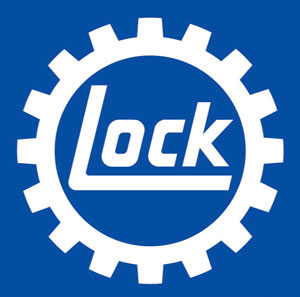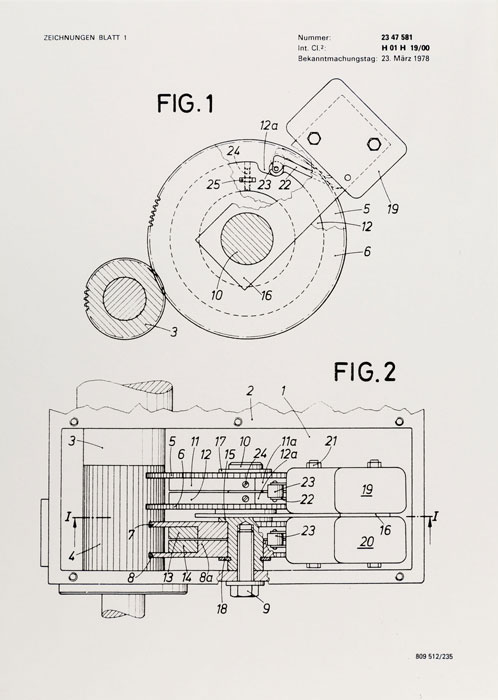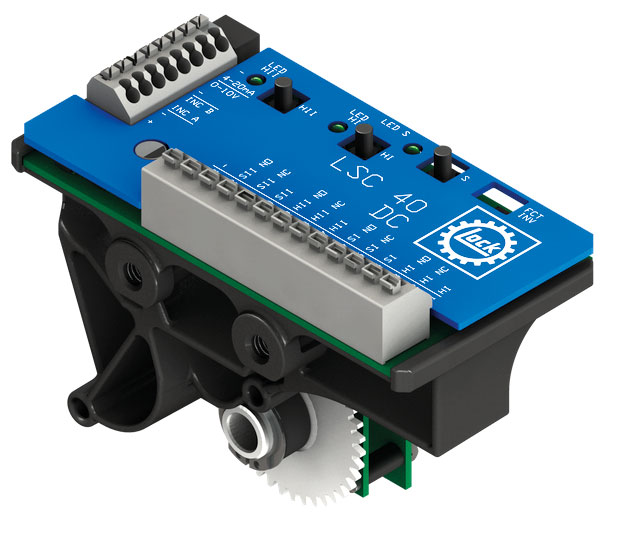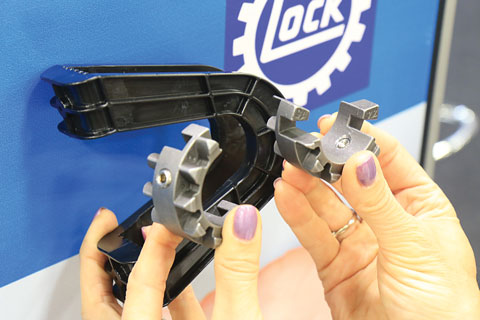7/1/2019
Lock Drives: 175 Years of Making Greenhouse Life Easier
Chris Beytes

Back in the days before greenhouse automation, if you wanted to open or close a vent, you grabbed a big handle and cranked it like mad. Day or night, weekday or weekend, if a vent needed to be opened or closed, somebody had to be there in person to do it, 24/7/365.
 Pictured left: In 1980, Lock Drives received a European patent for their innovative limit switch.
Pictured left: In 1980, Lock Drives received a European patent for their innovative limit switch.
Lock Drives—known in Germany as Lock Antriebstechnik (“drivetrain technology”)—has been designing and building gear and rack & pinion mechanisms for 175 years, since 1844 when founder Raphael Lock set up a workshop and forge in his basement in the village of Ertingen, about 60 miles south of Stuttgart. The first products of the fledgling Lock company were manual jacks and lifting devices, designed for agricultural and industrial applications, such as lifting wagons and heavy equipment. Their early tools were made of wood and iron.
As the business grew and Raphael’s son and grandson entered the business, they expanded the workshop facilities and tooling capabilities with lathes and milling machines. As master fitters, their lifting equipment became more sophisticated—some of it capable of lifting 25-ton railroad locomotives without the benefit of motors.
Fourth generation Freimut Lock joined the company in 1951 straight out of school with a degree in mechanical engineering. Freimut (which means “free and brave” in German), modernized the family business, moving it in 1953 from the historic workshop into an industrial complex and setting up distribution outside of Germany.
One of the first things he did in the ’50s was get Lock into the greenhouse market. He recognized the need for high-quality, well-engineered rack & pinion drives for this rapidly expanding area of German agriculture.
Once Freimut got into greenhouses, he also saw the need for easing the workload of greenhouse growers. Says his son Frank Lock, today the company’s fifth generation engineer/owner, “Growers have a life outside the greenhouse. They want to have a weekend and they don’t want to concentrate just on opening and closing vents; they want to concentrate on their crops.”
Which is why, in 1959, Freimut developed the Power Drive: the first motorized greenhouse vent system. Now opening and closing a vent was as easy as pushing a button. Soon, thermostat controls were added, giving growers their weekends off.
Sometimes.
Unfortunately, those early systems, while built as solidly as German tanks, still suffered wear and tear, and over time the spindle-style limit switches would lose what precision they had, rendering them unreliable. That led to Freimut’s second innovation, one that still dominates Lock’s business today: the Gear Limit Switch.
 Pictured: In 2019, Lock officially entered the digital age with a fully digital limit switch, the
Pictured: In 2019, Lock officially entered the digital age with a fully digital limit switch, the
LSC 40. A big benefit is easy setting of start and end positions, plus high precision.
Developed in 1973 (with the first sketches being done on a pack of Lord Extra cigarettes!), it features a stack of gears on a common shaft, with a groove cut across them and a roller switch that falls into the groove when all the gears are aligned. As the shaft turns, the gears also turn, but at different rates in relation to each other, so after just one revolution the groove goes out of alignment. Reverse the rotation and the grooves realign at exactly the same position from which they started, the roller falls into the groove and the motor stops, precisely, every time.
Lock’s Power Drive and Gear Limit Switch timed perfectly with the boom years of the European greenhouse industry in the ’70s and ’80s. Lock’s technology was adopted quickly. By the late 1980s, 95% of Lock’s business was greenhouse rack & pinion drives. Of course, it took better thermostatic and then computer controls to fully take advantage of Lock’s technology.
“The major concern in these years was to have a reliable production facility and to manage having a consistent quality,” says Frank, so they opened offices in the Netherlands and the U.S. to be closer to their customers, and half of their business is in agriculture (animal buildings), industrial lifting applications and glazed buildings. There’s a high transfer of technical know-how between these divisions, plus economies of scale that enables Lock to weather the ups and downs of the horticulture sector.
In 2012, Lock opened a state-of-the-art, 2,400 m2 production building that enabled to them to manufacture their drive systems using the very latest methodology relating to workplace organization.
“Shorter distances between the individual stages of the manufacturing process make production more efficient and more ‘lean.’ This also means that we can create ultra-modern workplace conditions for our employees,” says Frank of the upgrade.
One of the technologies to come out of that new facility includes the PAR 10 Position Repeater, designed to determine and control the position of their Power Drives and Power Racks with extreme precision and repeatability. It uses an electronic sensor to count the rotation of the shaft and has no mechanical limit switches, so there’s no mechanical wear.
 Another is the EZD 52, a unique two-piece pinion that allows for easy fitting and retrofitting onto a shaft without having to slide it on from the end, making it super easy to replace a defective pinion. The innovation won two different awards in Germany, including one from the Federal Ministry of Food & Agriculture.
Another is the EZD 52, a unique two-piece pinion that allows for easy fitting and retrofitting onto a shaft without having to slide it on from the end, making it super easy to replace a defective pinion. The innovation won two different awards in Germany, including one from the Federal Ministry of Food & Agriculture.
Pictured: The EZD 52, an innovative two-piece pinion, won a TASPO award in 2016.
Lastly, for 2019, Lock has entered the digital age with a fully digital limit switch, the LSC 40. A big benefit is easy setup of start and end locations. Plus, it’s extremely precise; consider how a CNC mill or lathe uses digital signals to start and stop, and you’ll get a picture of the accuracy and repeatability potential.
Earlier, Frank mentioned reliability and consistency as major concerns of customers. Lock has long worked hard at delivering on both and building customer loyalty in the process. Customer surveys indicate 97.5% customer satisfaction, 98% delivery capability and 99.2% delivery loyalty. It’s hard to beat numbers like those—although Lock continues to try, through constant upgrades and improvements to their products, systems and service.
Still, it’s safe to say that growers would probably say they’re most happy that Lock Drives gave them their weekends back. GT